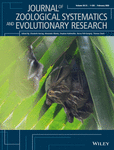Journal list menu
Export Citations
Download PDFs
Cover Image
- Page: i
- First Published: 05 August 2020
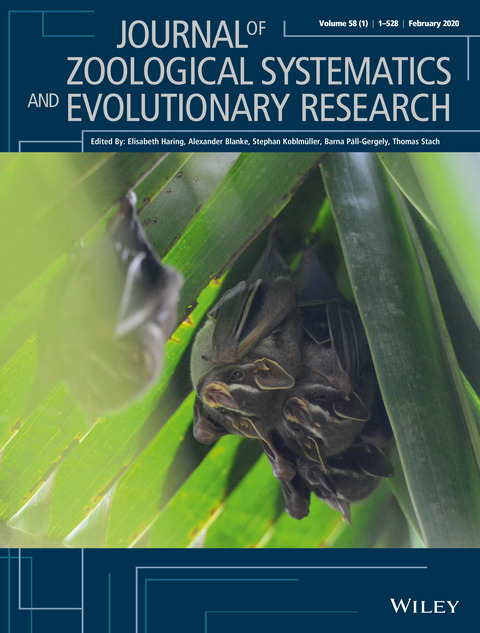
Cover: Yellow carotenoid-based skin coloration in Stenodermatinae bats is associated with communal roosting in tents built with plant leaves. In a comparative study of 71 species within Stenodermatinae, Galván et al. show an evolutionary correlation between yellow skin coloration and tent-roosting. As gregariousness in roosts and rich light conditions offered by plant tents may create opportunities to use visual signals that facilitate communication, these factors may have driven the evolution of yellow skin coloration in this subfamily of Neotropical bats. These results suggest that visual communication may have a more relevant role in the life histories of nocturnal bats than previously assumed. Journal of Zoological Systematics and Evolutionary Research, Volume 58, Issue 1, February 2020, Pages 519–527, Ismael Galván, Juan C. Vargas-Mena and Bernal Rodríguez-Herrera DOI: 10.1111/jzs.12329 Copyright of picture: © Galván 2017.
Cophylogenetic relationships between Dactylogyrus (Monogenea) ectoparasites and endemic cyprinoids of the north-eastern European peri-Mediterranean region
- Pages: 1-21
- First Published: 15 November 2019
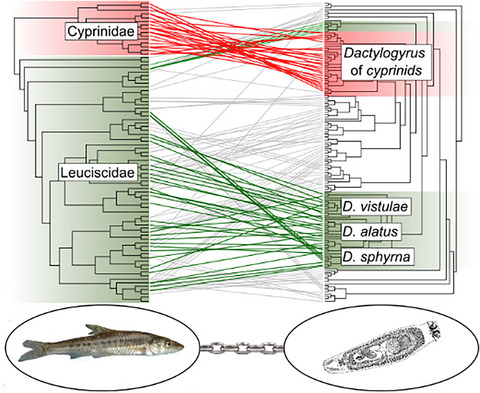
We used the cophylogenetic approach to investigate coevolutionary relationships between endemic cyprinoids from the Apennine and Balkan Peninsulas, and their respective Dactylogyrus species. Using distance-based and event-based cophylogenetic methods, we found significant coevolutionary signal between phylogenies of the parasites and hosts. Out of 138 host-parasite individual links, 65 contributed significantly to the global cophylogenetic structure (p < .05). Results of the event-based cophylogenetic analyses suggest that Dactylogyrus speciation is primarily driven by duplication followed by host-switching.
QUIDDICH: QUick IDentification of DIagnostic CHaracters
- Pages: 22-26
- First Published: 31 October 2019
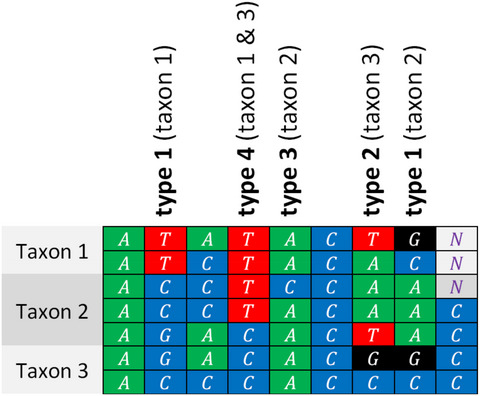
To facilitate the incorporation of genetic characters into taxonomic descriptions, in particular of morphologically cryptic taxa, we developed QUIDDICH, an R package for the QUick IDentification of DIgnostic CHaracters. QUIDDICH identifies and tabs those columns in an alignment that allow to distinguish taxa and classifies them into four different types of diagnostic characters. Thus, cryptic taxa do not have to remain in taxonomic crypsis and, bearing a proper name, can be included in biodiversity assessments and ecological and evolutionary analyses.
Soft sponges with tricky tree: On the phylogeny of dictyoceratid sponges
- Pages: 27-40
- First Published: 28 January 2020
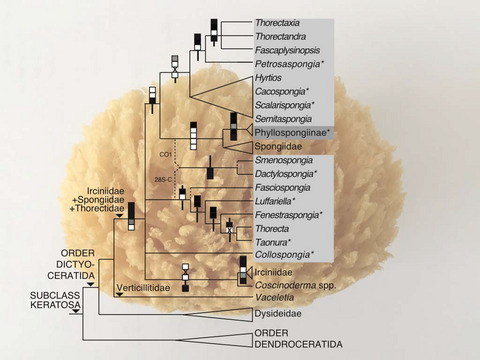
Dictyoceratid sponge phylogeny was reconstructed with ITS and 28S (C-region) rRNA data and compared with CO1, 18S, and 28S (D3-D5) data. Type material was included, where possible. Thorectidae and its subfamily Thorectinae are paraphyletic. Phyllospongiinae are sister to Spongiidae. Phylogenetic signal of taxonomic relevant morphological characters is low.
A phylogenetically informed search for an alternative Macrostomum model species, with notes on taxonomy, mating behavior, karyology, and genome size
- Pages: 41-65
- First Published: 18 December 2019

We describe three Macrostomum species and show they are close relatives of the free-living flatworm model M. lignano, recently shown to harbour variable karyotypes with a 2n = 8 ground pattern. The new species differ in karyotype from M. lignano and each other, with M. janickei (left) and M. mirumnovem (right) also having variable karyotypes with 2n = 10 and 2n = 9 ground patterns, respectively. In contrast, M. cliftonensis (center) has a stable 2n = 6 karyotype, making it a promising genetic model.
A complex species complex: The controversial role of ecology and biogeography in the evolutionary history of Syllis gracilis Grube, 1840 (Annelida, Syllidae)
- Pages: 66-78
- First Published: 15 November 2019
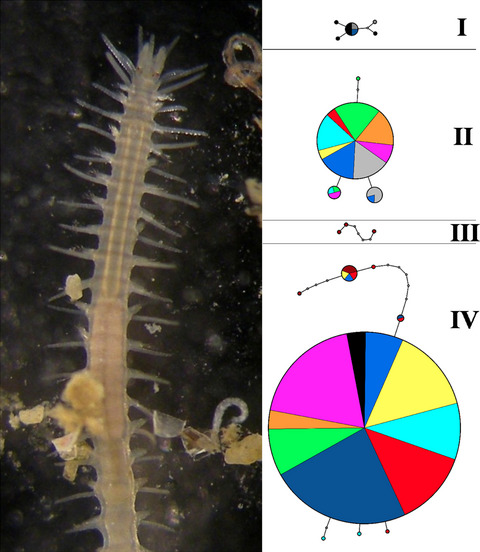
The cryptic diversity in the polychaete Syllis gracilis was examined in eleven Mediterranean localities with an integrative morpho-molecular approach. We observed a morphotype with short appendages in coralline algae communities and one with long appendages in brackish-water environments and Sabellaria reefs. Sequences of the mitochondrial 16S rRNA gene revealed four divergent lineages not corresponding to morphological clusters. Some sympatric lineages were equally distributed in marine and brackish-water environments, excluding a biogeographic or ecological explanation of the observed pattern, suggesting instead ancient separation between lineages.
The Pseudoplagioporinae, a new subfamily in the Opecoelidae Ozaki, 1925 (Trematoda) for a small clade parasitizing mainly lethrinid fishes, with three new species
- Pages: 79-113
- First Published: 23 October 2019
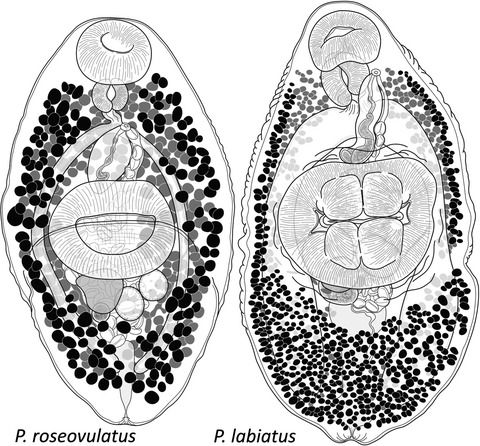
We propose a new subfamily, the Pseudoplagioporinae, for a small clade of opecoelid trematodes exploiting emperor fishes (Lethrinidae), comprising the genera Pseudoplagioporus, Fairfaxia, and Shimazuia. Orthodena is synonymized with Pseudoplagioporus, and two new species are proposed, Pseudoplagioporus labiatus and Pseudoplagioporus roseovulatus, from Monotaxis grandoculis and Monotaxis heterodon, respectively.
Systematics and evolution of Kibramoa Chamberlin 1924 (Araneae: Plectreuridae) from the California Floristic Province
- Pages: 114-126
- First Published: 28 January 2020
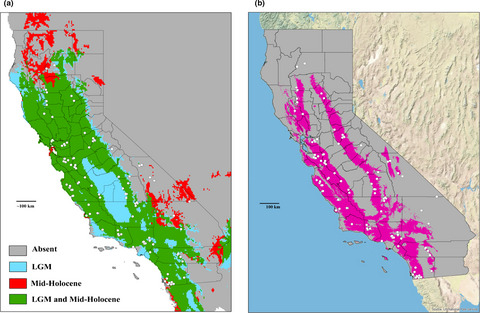
A systematic study of the eight-eyed haplogyne spider genus Kibramoa, endemic to the biodiverse California Floristic Province (CFP), is presented. A reexamination of genital morphology reflected cryptic species, yet phylogenetic analyses consistently recovered several divergent lineages. Kibramoa, as inferred by species distribution modeling (SDM), had a much wider distribution during the Mid-Holocene. A time-calibrated phylogeny indicated that the most recent common ancestor of Kibramoa appeared in the Mid-Miocene and continued to diversify throughout the Plio-Pleistocene.
Telomere structure in insects: A review
- Pages: 127-158
- First Published: 19 November 2019
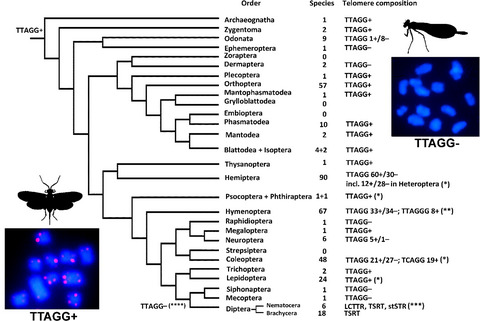
Telomeres are terminal regions of chromosomes, which protect and stabilize their structure. Telomeres usually contain specific DNA repeats (motifs) that are maintained by telomerase. In this review, we survey the current state of knowledge of telomere motifs in insects. The telomeric repeat TTAGG is considered ancestral for the class Insecta. However, certain insects have different and often unknown telomeric sequences. This happens because telomerase-dependent mechanisms coexist with various means of alternative lengthening of telomeres as backup mechanisms of telomere maintenance.
Exaggerated male forelegs are not more differentiated than wing morphology in two widespread sister species of black scavenger flies
- Pages: 159-173
- First Published: 18 August 2019
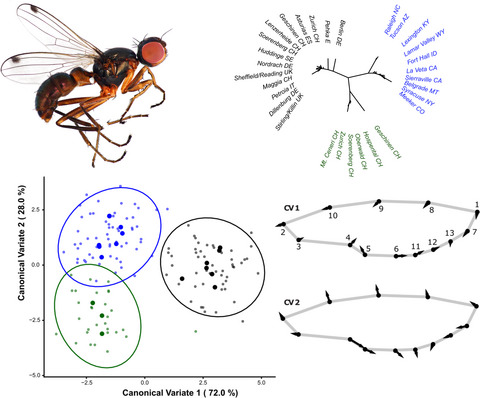
We assessed morphological differentiation of a male sexual trait (exaggerated fore femur) and a non-sexual trait (wing) in European Sepsis cynipsea and European and North American Sepsis neocynipsea. These two widespread dung fly species occur in sympatry and allopatry. Using microsatellite markers, we found strong differentiation between and little differentiation within all three lineages. The morphological data suggest moderate reproductive character displacement in femur morphology and similar rates of divergence for sexual and non-sexual traits.
Taxonomic review and phylogenetic inference elucidate the evolutionary history of Mesozoic Procercopidae, with new data from the Cretaceous Jehol Biota of NE China (Hemiptera, Cicadomorpha)
- Pages: 174-193
- First Published: 04 November 2019
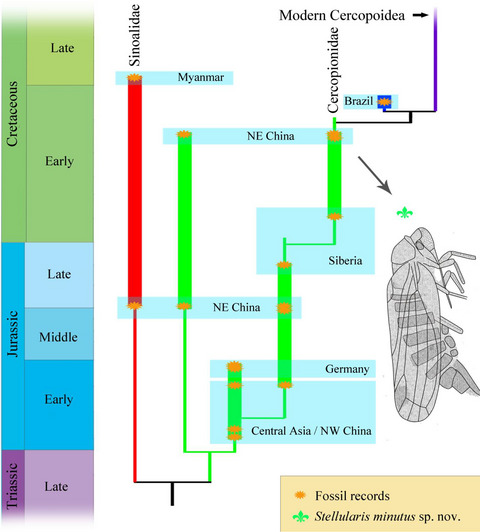
An extensive taxonomic review of Procercopidae is presented, and some new fossils are reported from the Lower Cretaceous Yixian Formation of NE China, with two new species, Stellularis bineuris Chen and Wang, sp. n. and S minutus Chen and Wang, sp. n., erected. The morphological phylogenetic analyses recover the high-level relationships within Cercopoidea as follows: Sinoalidae + (Procercopidae + (Cercopionidae + modern cercopoids)), and reveal that stem procercopids evolved step by step into modern cercopoid forms in the Mesozoic.
First case of parthenogenesis in ladybirds (Coleoptera: Coccinellidae) suggests new mechanisms for the evolution of asexual reproduction
- Pages: 194-208
- First Published: 17 November 2019
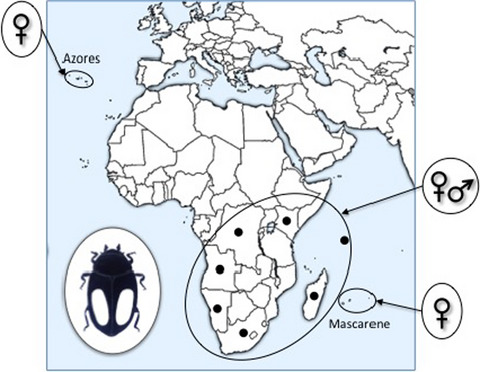
We report here the existence of all-female populations, genetically similar and identified as Nephus voeltzkowi Weise, in the Azores and the Mascarene. Laboratory experiments confirmed they reproduce via thelytokous parthenogenesis, and we combined different approaches to investigate the proximate mechanisms at its origin. Our results reject polyploidization and strongly support a non-hybrid origin. In contrast, we identified chromosome rearrangements and a Wolbachia infection in parthenogenetic individuals. We cannot exclude they are proximal causes of parthenogenesis.
Phylogenetic topology and timing of New Zealand olive shells are consistent with punctuated equilibrium
- Pages: 209-220
- First Published: 22 November 2019
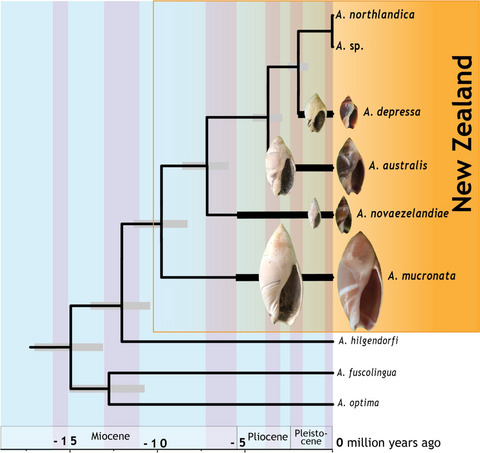
Morphological stasis in the fossil record is illustrated by three species of New Zealand marine snails (olive shells of the genus Amalda). Mitochondrial genome and nuclear rRNA gene cassette DNA sequences (21,300 bp) resolved the New Zealand olive shell fauna as monophyletic. Molecular clock analyses were compatible with the fossil record for extant New Zealand species. We infer that stasis is not associated with cladogenesis in this lineage which is consistent with the expectations of punctuated equilibrium.
Copse snail Arianta arbustorum (Linnaeus, 1758) (Gastropoda: Helicidae) in the Baltic Sea region: Invasion or range extension? Insights from phylogeographic analysis and climate niche modeling
- Pages: 221-229
- First Published: 28 January 2020
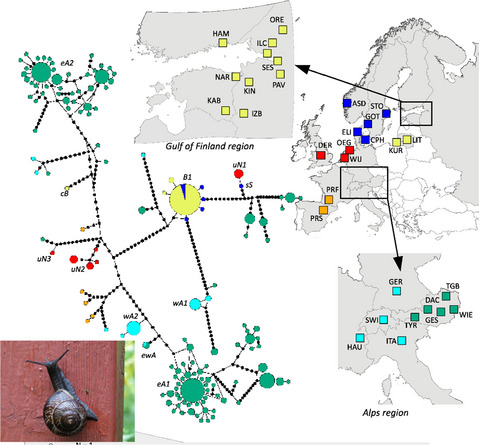
We investigated mtDNA variation of copse snail Arianta arbustorum across Europe with the particular interest to the recently established populations in the easternmost part of the species range. We also applied bioclimatic envelope modeling to determine the environmental factors responsible for the ongoing A. arbustorum range shift. The unique haplotype lineage was found across all the Baltic Sea populations, while central European and Alpine populations showed high genetic diversity. Our data show that range expansion in copse snail is a rapid process driven by climatic oscillations.
Systematic review of the “Chromodoris quadricolor group” of East Africa, with descriptions of two new species of the genus Chromodoris Alder & Hancock, 1855 (Heterobranchia, Nudibranchia)
- Pages: 230-261
- First Published: 25 November 2019
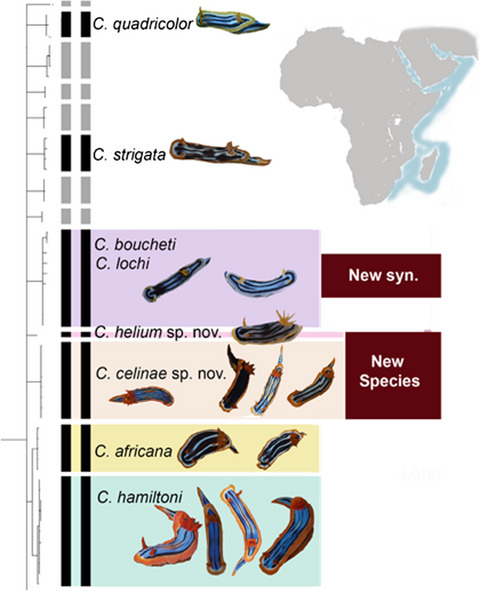
In this study, we combine molecular genetic analyses with morphological data to review the “Chromodoris quadricolor complex” in East Africa. As a result, Chromodoris boucheti is synonymized with Chromodoris lochi, and two new species are described: Chromodoris helium sp. nov. and Chromodoris celinae sp. nov., the latter was previously misidentified as C. hamiltoni. This study agrees with previous research indicating the recent divergence of the genus Chromodoris.
Second Sahelian amphibian endemism suggested by phylogeography of Groove crowned Bullfrog (Hoplobatrachus occipitalis) in western Sahel and hints of polyploid species formation
- Pages: 262-274
- First Published: 08 August 2019
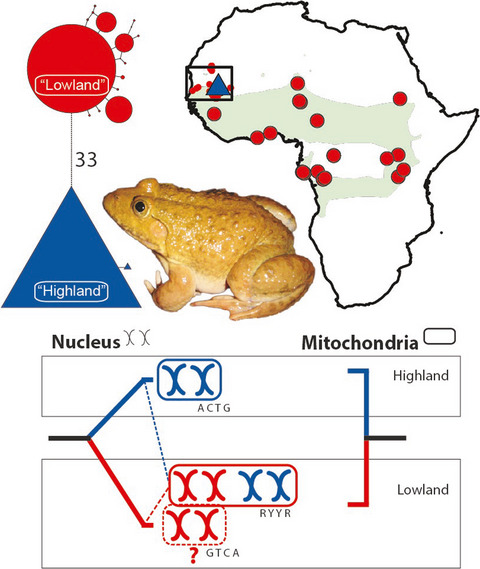
A phylogeographic assessment of the African Groove crowned frog, Hoplobatrachus occipitalis, revealed evidence of a recent (re-)colonization of the mountains in its northernmost distribution and highlights the role of southern Mauritanian mountains and large rivers as climatic refugia. Two major lineages were detected, one perhaps endemic to Mauritania and the other widespread in Africa. The first lineage might constitute the second Sahelian amphibian endemic; the latter may have originated through an allopolyploidy event, with the Mauritanian lineage as one parental.
Testing the hybrid superiority hypothesis in crested and marbled newts
- Pages: 275-283
- First Published: 12 August 2019
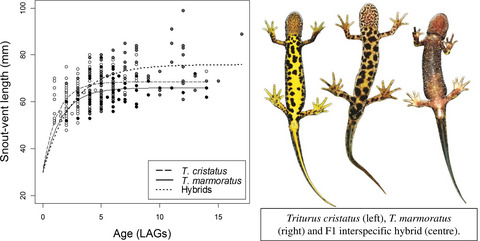
We tested the hybrid superiority hypothesis in the overlap and hybridization area of the newts Triturus cristatus and T. marmoratus, Mayenne, France. We found significant differences in snout-vent length (SVL), body mass and average lifespan between the parental species and hybrids, increasing from T. cristatus – T. marmoratus – hybrids. The observed heterosis appears not to have further evolutionary consequences, as the hybrids are largely infertile. Our results also support the hypothesis that, within genus Triturus, infertile hybrids allocate resources to growth.
Evolutionary origins of viviparity in Chamaeleonidae
- Pages: 284-302
- First Published: 09 September 2019
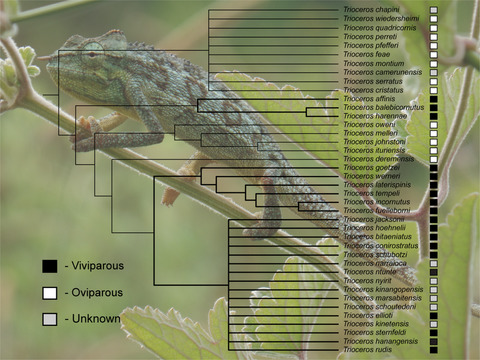
- We found three origins of viviparity in Chamaeleonidae, with each origin of live birth in closed-canopy forests.
- Past claims that arboreality would not allow for evolution of viviparity were not supported, nor was a recent suggestion that viviparity has reverted to oviparity in chameleons.
- This study highlights the value of using phylogenetic comparative analysis in a manner that is robust to uncertainty when the goal is to reconstruct evolutionary sequences and selective pressures.
The enigmatic Crimean green lizard (Lacerta viridis magnifica) is extinct but not valid: Mitogenomics of a 120-year-old museum specimen reveals historical introduction
- Pages: 303-307
- First Published: 24 October 2019
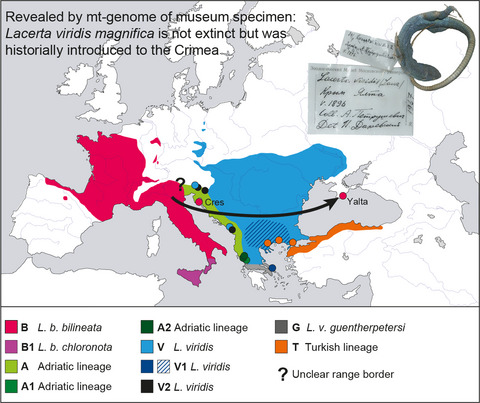
Lacerta viridis magnifica was thought to be an extinct taxon. Using NGS protocols for highly degraded DNA, we sequenced the mitochondrial genome for one of the originally formalin-preserved museum specimens. This revealed that L. v. magnifica represented an introduced population of L. bilineata, which occurs far away. Crimean green lizards lived within a medieval Genoese colony, suggestive of introduction from Italy. Our study exemplifies the value of formalin-preserved specimens for clarifying the status of questionable rare or extinct taxa.
Unraveling the diversification and systematic puzzle of the highly polymorphic Psammobates tentorius (Bell, 1828) complex (Reptilia: Testudinidae) through phylogenetic analyses and species delimitation approaches
- Pages: 308-326
- First Published: 03 December 2019
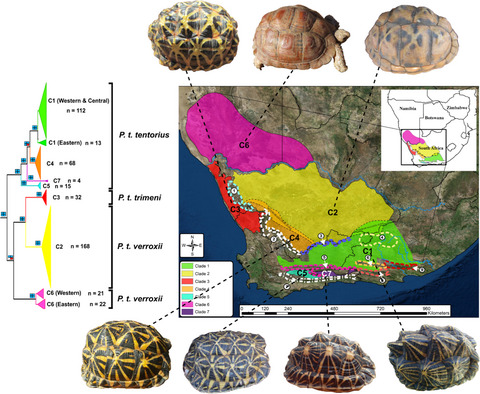
The phylogenetic analyses retrieved seven distinct mtDNA clades (C1-C7) in the Psammobates tentorius complex using loci Cytb, ND4, tRNA-His, tRNA-Ser, 12S, 16S. Each clade occurs in a distinct geographical region. Clades 1, 4, 5, and 7 correspond to tortoises identified as P. t. tentorius, clade 3 to P. t. trimeni, and clades 2 and 6 to P. t. verroxii. We found that P. t. verroxii was not a monophyletic group and should therefore not be considered as taxonomically valid.
Austrian gudgeons of the genus Gobio (Teleostei: Gobionidae): A mixture of divergent lineages
- Pages: 327-340
- First Published: 25 November 2019
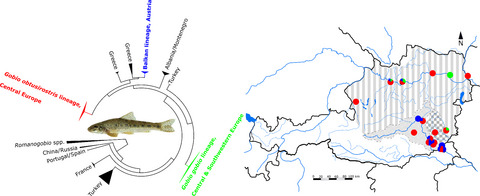
The taxonomy and systematics of gudgeons of the genus Gobio have been the matter of a long-standing debate. Two species, Gobio gobio and G. obtusirostris have been reported for Austria with a potential hybrid zone in the upper Danube. Genetic data generated in this study, however, suggest that the hybrid zone spans large parts of the Austrian Danube system and revealed the presence of a third lineage closely related to species from the Balkans.
Diversity and structure of fragmented populations of a threatened endemic cyprinodontid (Aphanius sophiae) inferred from genetics and otolith morphology: Implications for conservation and management
- Pages: 341-355
- First Published: 02 December 2019
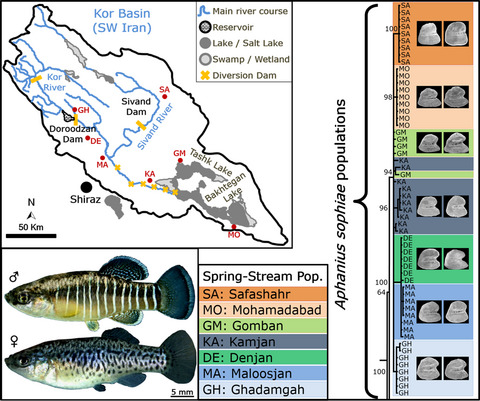
Genetic diversity and spatial structure of seven populations of Aphanius sophiae were assessed by combining Cyt b gene sequences and otolith morphometry. Results showed a high level of differentiation, not only among geographically distant populations but also among neighboring localities. Limited gene flow due to habitat fragmentation could be an important factor contributing to population structuring and to the loss of genetic variation. Conservation plans must recognize populations’ genetic independence, preventing the loss of locally adapted genotypes.
Snakehead (Teleostei: Channidae) diversity and the Eastern Himalaya biodiversity hotspot
- Pages: 356-386
- First Published: 16 August 2019
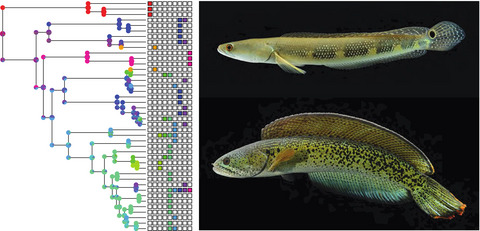
Based on a comprehensive molecular multilocus study of 223 individuals, we provide a species-level hypothesis of phylogenetic relationships among snakeheads. Eight species groups are distinguished within the Asian snakeheads of the genus Channa and large intraspecific divergences indicate additional species diversity in several clades. We provide a temporal and spatial framework of channid evolution and show that almost 40% of the snakehead species are narrow range endemics of the Eastern Himalaya biodiversity hotspot.
Phylogenetic relationships of a new genus and species of stevardiine fish (Characiformes: Characidae: Stevardiinae) from the Río Amazonas basin, Peru
- Pages: 387-407
- First Published: 28 January 2020
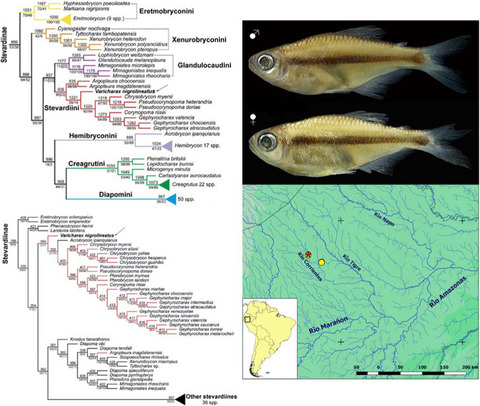
Varicharax nigrolineatus, a new genus and species, is described from the Río Amazonas basin in Peru. It is distinguished from all characids by the presence of a pouch-like structure consisting of multiple scales on the lower caudal-fin lobe, caudal-fin bony hooks, complete lateral line, dark mid-lateral stripe extending from posterior border of head to caudal peduncle, and absence of humeral mark. The new genus is supported by 18 autapomorphies and is phylogenetically related to, or located within, the tribe Stevardiini.
Phylogeography and population history of the least weasel (Mustela nivalis) in the Palearctic based on multilocus analysis
- Pages: 408-426
- First Published: 26 November 2019
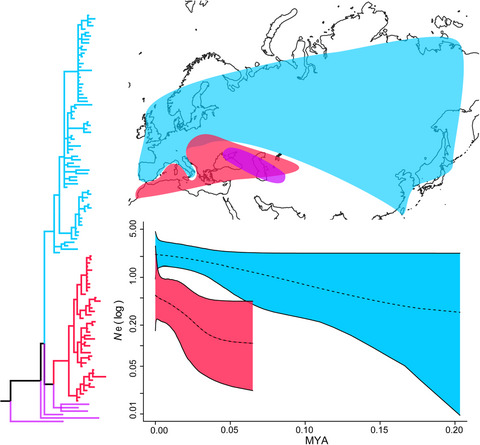
Our mitochondrial DNA analysis exposed two clades, Clade I across Palearctic and Clade II limited in the south western part of the Palearctic. Based on the coalescent-based demographic reconstructions, the expansion of Clade I was remarkably rapid, while Clade II was relatively stable for a longer time. It seems that Clade II has maintained a constant population size in the temperate region, and the expansive Clade I represents adaptation to the cold regions.
Ancient DNA from an extinct Mediterranean micromammal—Hypnomys morpheus (Rodentia: Gliridae)—Provides insight into the biogeographic history of insular dormice
- Pages: 427-438
- First Published: 25 November 2019
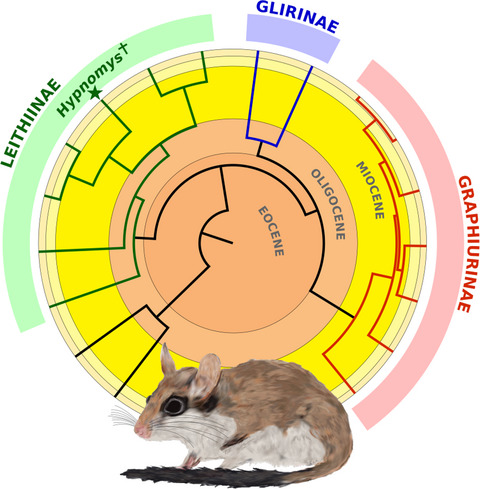
We infer a sister relationship of the extinct Balearic dormouse Hypnomys morpheus with the extant members of Eliomys using fragments of mitochondrial genes. Sequence variation between Hypnomys and Eliomys allows us to reject the hypothesis that Hypnomys is a subgenus of Eliomys. Our analyses suggest that Hypnomys and Eliomys diverged 13.67 million years ago, which together with the molar morphology of early representatives of Hypnomys points to a Middle-Late Miocene origin from a continental glirid with a complex molar pattern.
Systematics and evolution of the libyan jird based on molecular and morphometric data
- Pages: 439-458
- First Published: 19 November 2019
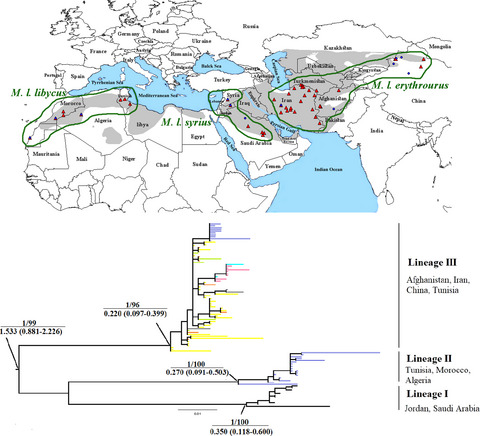
Phylogeographic history of libyan jird revealed three allopatric lineages for this species: Western lineage in North Africa (Meriones libycus libycus), Central lineage in Saudi Arabia, Jordan, and Syria (Meriones libycus syrius), and Eastern lineage in Iran, Afghanistan, and China (Meriones libycus erythrourus). All divergence events probably occurred during the Pleistocene, after 1.597 Ma. Quaternary climate fluctuations in the Sinai Peninsula and tectonic activity of the Zagros Mountains and/or the Mesopotamia Plain of Iraq during the Pleistocene could trigger diversification among these three lineages.
A complex scenario of glacial survival in Mediterranean and continental refugia of a temperate continental vole species (Microtus arvalis) in Europe
- Pages: 459-474
- First Published: 25 November 2019
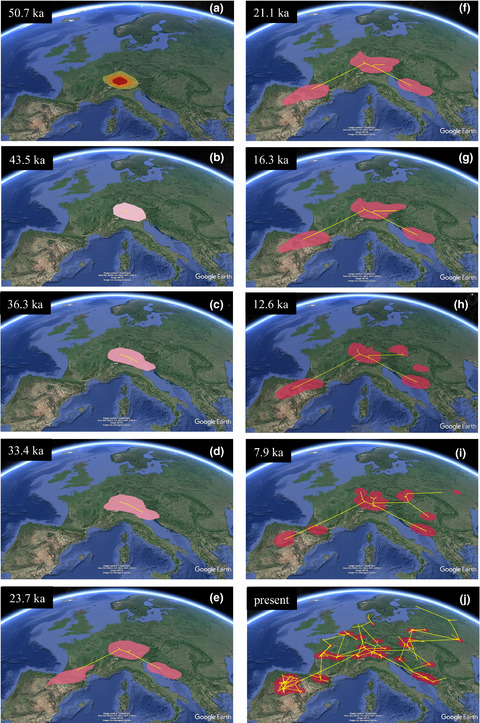
We used the common vole Microtus arvalis to investigate the origin, location of glacial refugia, and dispersal pathways in the group of “continental” species in Europe. Our analyses revealed that M. arvalis is a paradigm of ice-age survival in western and eastern Mediterranean peninsulas (sources of endemism) and multiple continental regions (sources of postglacial spread). Our investigation uncovered a new cytochrome b lineage (Iberian) and provides support for a major role of large European rivers in shaping genetic boundaries.
Social but lonely: Species delimitation of social voles and the evolutionary history of the only Microtus species living in Africa
- Pages: 475-498
- First Published: 25 August 2019
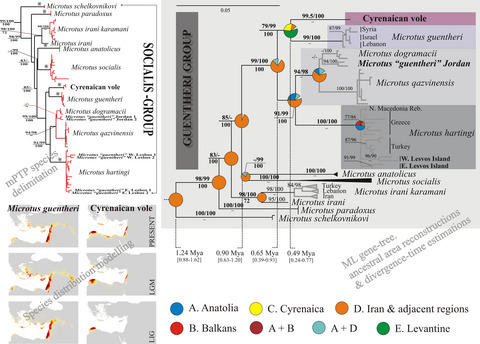
The Cyrenaican vole has an uncertain taxonomic status due to the problematic systematics of the entire group of social voles. Here, we re-built the social-vole phylogeny and delimited nine species, including the Cyrenaican Microtus mustersi and its sister species M. guentheri. Their common ancestor dispersed into Cyrenaica through a coastal Mediterranean route and was isolated there for more than 200,000 years, leading to niche divergence; M. mustersi benefited from the milder Cyrenaican climate, while M. guentheri adapted to more xeric conditions.
Evolutionary history of the European free-tailed bat, a tropical affinity species spanning across the Mediterranean Basin
- Pages: 499-518
- First Published: 25 November 2019
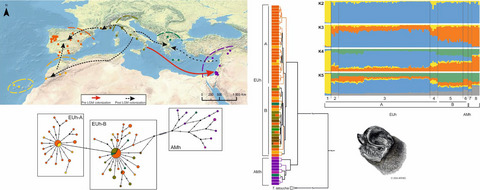
European free-tailed bat populations were able to survive in Italy and Anatolia/Middle East during the LGM and have subsequently colonized the current species range. Phylogenetic reconstruction confirms a split of two main lineages, Anatolian/Middle East clade and a European clade further splitting into two subgroups. One of the groups in the European clade is exclusive to Iberia and Morocco while the other is distributed elsewhere in central and western Mediterranean. Population structure analysis revealed three main genetic populations with meaningful gene flow.
Tent-roosting may have driven the evolution of yellow skin coloration in Stenodermatinae bats
- Pages: 519-527
- First Published: 04 October 2019
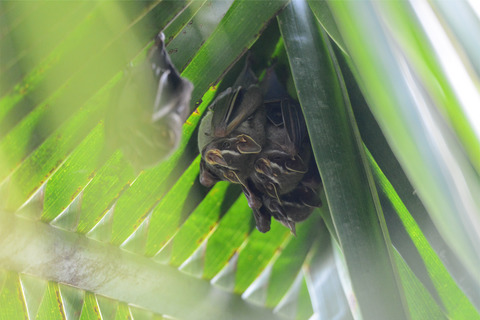
Yellow carotenoid-based skin coloration in Stenodermatinae bats is associated with communal roosting in tents built with plant leaves. We suggest that dietary carotenoids and camouflage benefits of their color drove the evolution of the yellow skin coloration, and gregariousness and light conditions in tents then favored the evolution of a secondary role of this trait in visual communication. The image shows yellow skin coloration in Thomas's fruit-eating bats Artibeus watsoni roosting in a tent (Photo © I. Galván), Costa Rica.




